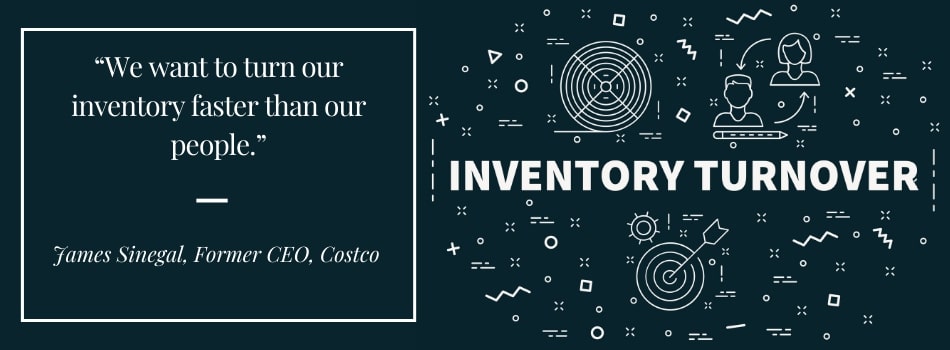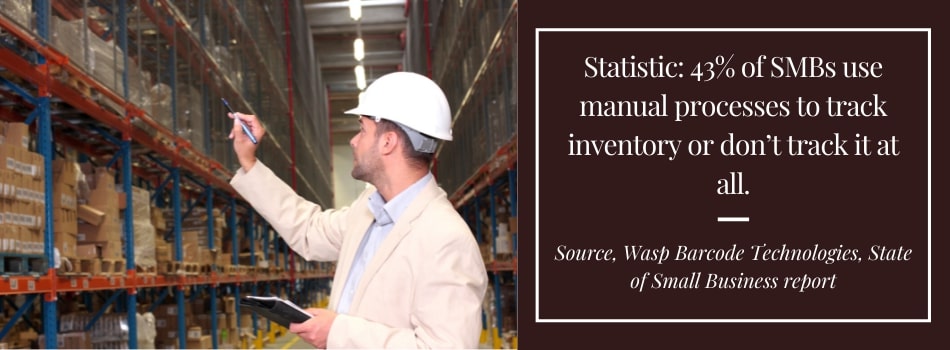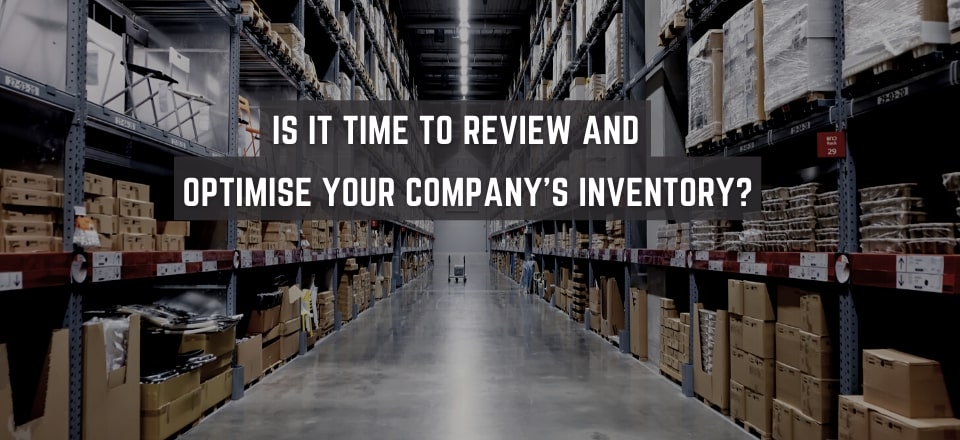Among the universal challenges that the COVID-19 pandemic has imposed upon the supply chain management profession is the question of inventory, specifically, “how much is enough?”
Not that it was ever an easy question to answer, but the Coronavirus crisis has perhaps turned it on its head, or at least, helped to do so. It wasn’t long ago that businesses were asking, “By how much can I reduce my levels of inventory?”

Today, the question is more about how much inventory is sufficient to safeguard the supply chain from disruption. It’s a good one to consider, and perhaps an appropriate stimulus for companies to review inventory performance and revise their strategies.
The tips and ideas that follow should be helpful if you’re at that point of taking a long, hard look at your company’s inventory policy.
Let’s Start with Safety Stock

Safety stock levels have become a popular talking point since the onset of the pandemic. Panic buying among consumers, global shipping container shortages, and restrictions on the movement of people and freight created a storm of inventory uncertainty across all commercial categories.
After years of focus on just-in-time shipping and inventory minimization, few companies were ready for the chaos that COVID-19 wrought on their supply chains.
Today, after more than a year of disruption, many supply chain leaders believe that now is the time to review safety stock levels for finished goods and, in the case of manufacturers, raw materials.
If you’re considering the same, it will be essential to think about reordering points when calculating your required safety stock level. That is the level to which each SKU quantity must fall before your inventory management system either notifies you with a reminder to reorder or initiates a purchase order autonomously.
Reordering points and safety stock levels go hand-in-hand—one effectively supports the determination of the other.
Know Your Turnover Ratios

The other key aspect to consider when determining safety stock levels is your inventory turnover ratio. To calculate this ratio, you need to take your annual cost of goods sold, and divide it by the average value of inventory on hand.
For example, if your cost of goods sold for 2020 was $250,000, and your average inventory on hand was worth $25,000, your inventory turnover ratio would be $250,000/$25,000 = 10, meaning your entire stock of that particular SKU turns over around ten times per year.
Turnover Days and How to Calculate Them

While understanding your inventory turnover ratio will help you calculate the optimum level of safety stock to carry, it’s only a start. You can’t rely on it entirely, because it doesn’t account for seasonality, or other peak and quiet periods during your company’s year of sales.
You can always refine the calculation a little more by using inventory turnover days. To do that, divide the number of days in a year by your turnover ratio.
Using the previous example, dividing 365 days by 10 gives you 36.5 inventory turnover days. With that information, you can start to think about tweaking the number of inventory days you plan for during the high and low periods for sales.
Now, let’s get back to the question of safety stock because, with a good idea of how fast your items sell, you can use that information to help gauge how much safety stock to carry.
Determining Safety Stock Levels
As a rough rule of thumb, your safety stock levels should take into account the difference between average and maximum daily sales of a product, and between the average and maximum lead times for inbound delivery of that product. The formula looks like this:
Maximum lead time x maximum daily sales – average lead time x average daily sales.
The solution to the formula gives you a nominal recommendation for the level of safety stock to carry. To figure out your reordering point, you will take the number of units typically demanded during the lead time for inbound delivery, and add that number together with your total units of safety stock.
Of course, all these guidelines and formulas portray an over-simplified approach to calculating safety stock levels, and your company’s supply chain will doubtless be subject to specific conditions and circumstances that you’ll need to include in your reasoning.
It would also be misleading to suggest that the calculation is a one-time affair. You should revisit the numbers regularly to adjust for changes in your business and the forces acting on it.
Is it Time to Get More Scientific About Inventory Planning?
Indeed, there is nothing simplistic about determining and managing inventory levels, and the larger the distribution network and the more sites in operation, the more complicated it becomes. The pandemic caught the world by surprise, and availability issues created difficulties even for companies with a risk-averse, conservative approach to inventory levels.
If anything, the unprecedented disruptiveness of the COVID crisis has highlighted the flaws in traditional methods of inventory calculation, which are based mainly on historical demand analysis.

Perhaps it’s time for your company to take a more scientific approach. Many organisations now acknowledge that instead of looking back at monthly sales cycles, it’s necessary to pivot to a process of demand sensing, by monitoring weekly sales to keep on top of trends as they develop.
The Recent Past Can’t Inform the Future
For most enterprises, the past 12 months or more have been so completely out of whack with commercial norms that it’s probably futile to try and use historical data captured during that time for determining future inventory levels.
Most of today’s inventory planning software products are equipped with the engines and logic necessary to sense demand signals from recent data.
However, if you don’t have such a solution, it doesn’t mean you need to be left out in the cold. It might mean, though, that you’ll need to engage some external expertise, in the form of specialists who have technology capable of analysing the flow of data through your supply chain—and the skills necessary to interpret it.
A transition from inventory planning based on historical sales cycles to using demand sensing will enable you to calculate safety stock requirements with more accuracy. It will also improve your buffer and cycle stock planning. However, another element of inventory management should be reviewed and addressed before you get too far into an inventory strategy review—the accuracy of your current inventory.
Can You Count on Your Counting?
It may seem obvious that you have to know what you have before you can decide what you need. Still, a surprising number of companies are working with an incomplete or inaccurate picture of current inventory levels, even in this age of digital inventory management.
You see, even the most sophisticated inventory management software requires accuracy in the physical counting of stock, and many operators struggle to maintain the necessary precision.

To ensure you’re not one of them, it will be a good idea to make sure your inventory-management team adheres to the following best practices in counting and control.
Maintaining up-to-date data: Are you sure that every inbound arrival of inventory is promptly and accurately entered into your system? If you have RF scanning in your facility, this is less likely to be an issue, but if you rely on barcode scanning with handheld guns, or manual entry, it will be worth making sure your goods-in team is on top of things.
Starting with a full physical inventory count: Before you begin to review your strategy for carrying inventory, you should undertake a full physical stock count, as disruptive as that may be to your operation. Again, you must be sure your inventory is 100% accurate before recalculating cycle, buffer, or safety stock.
Maintaining regular cycle counts: If you’re positive that you’re totally on top of your physical inventory, you’re probably conducting cycle counts every quarter at least. If so, are you confident that the counts are following your prescribed schedule?
If resource constraints don’t always allow this, try to prioritise your counting, rather than just skipping a cycle altogether. Ideally, you will have categorized your SKUs by ABC analysis, in which case your “A” lines should have priority in cycle counting, as well as any specific products with which have historically been troublesome from a counting perspective.
If possible, cycle counts should be conducted more frequently than once a quarter. I recommend aiming for a weekly counting schedule. If you can’t achieve that right away, put it on your list of inventory management goals and try to work up to that target over time.
Inventory Optimisation for a Post-COVID Era
The supply chain profession, and all businesses that depend on it, has been shaken by the (hopefully) once-in-a-lifetime cataclysm that is the Coronavirus pandemic. As in all times of adversity, though, lessons have been learned.
Companies worldwide have found out that their lean supply chains were too fragile to weather an absolute storm. Many will now take a different stance on inventory optimisation.

How much inventory should your company hold? It would be nice if somebody could give you a definitive answer, but in reality, that can only be driven by an in-depth analysis of your business and its supply chain.
Time for a Healthy Dose of Diagnostics?
There is certainly no shortage of executive leaders seeking answers to inventory-management questions, and the demand for diagnostic services is significant following the pandemic’s wake-up call. At Logistics Bureau, we offer a range of such services, developed specifically to answer questions like:
- How much inventory should we be carrying?
- How do we optimise our inventory without becoming too lean?
- How can we adjust our inventory strategy for the post-COVID era?
As we emerge from the depths of a global crisis that has reshaped supply chains globally, it’s time to learn the lessons and use the knowledge to strengthen your business.
To find out more about how Logistics Bureau can help you, take a look at our inventory diagnostics page, or if you’d like to discuss your plans and ideas with us, get in touch to schedule a free advisory call.
Editor’s Note: This post was originally published on May 25, 2021, under the title “Inventory Optimisation: How Much Stock is Right for Your Company?” on Logistics Bureau’s website


